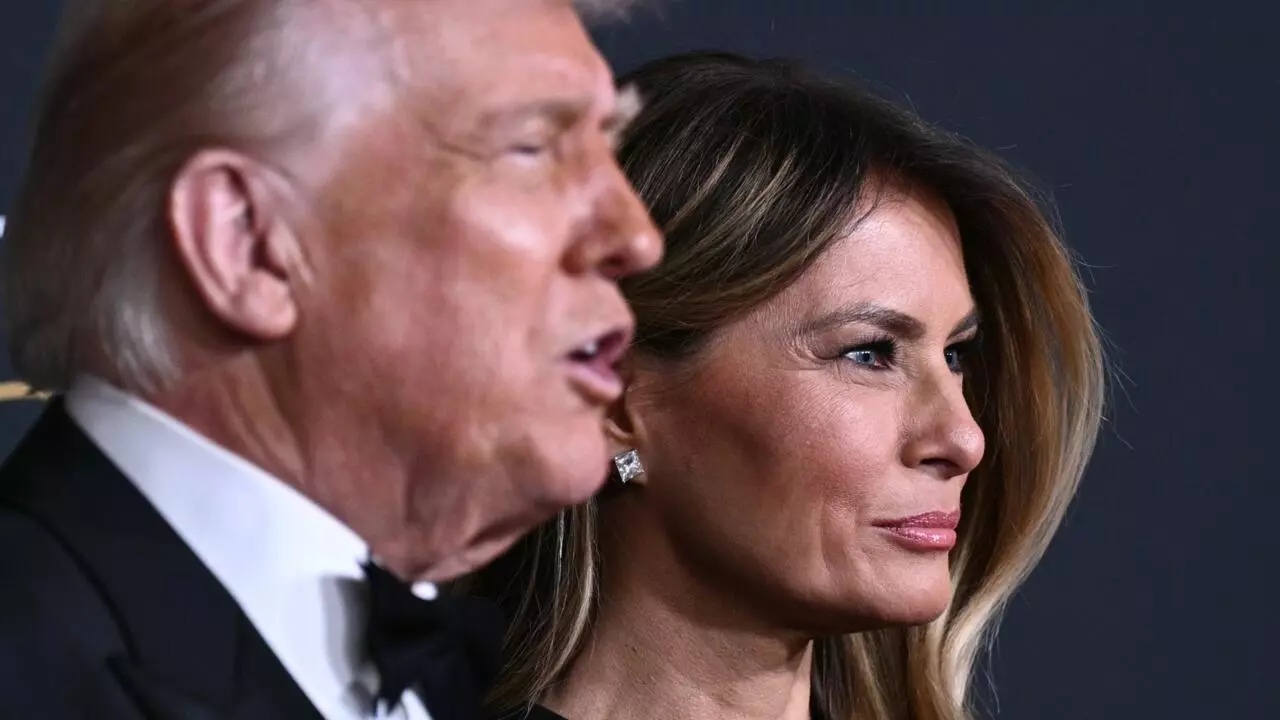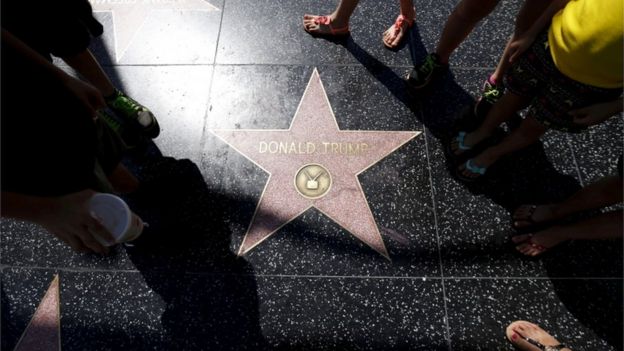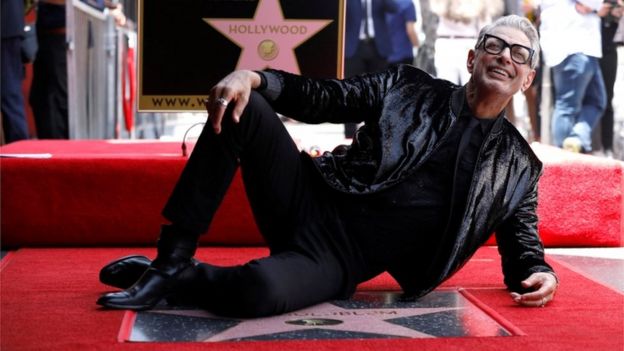
This article is more than
8 year oldThe West Hollywood City Council has passed a resolution to remove US President Donald Trump's star from the Hollywood Walk of Fame in a unanimous vote. Here is why his name is unlikely to disappear.
"Earning a star on the Hollywood Walk of Fame is an honour. When one belittles and attacks minorities, immigrants, Muslims, people with disabilities or women - the honour no longer exists," West Hollywood Mayor John Duran told the BBC in an emailed statement.
But it's the Hollywood Chamber of Commerce, not the city, that maintains the popular tourist destination.
The mayor acknowledged the council had no direct authority over the Walk of Fame, saying: "It's up to them."
The council has never before asked for a particular star to be removed.
The vote follows recurring bouts of vandalism of Mr Trump's star, which have been expensive to fix.
Most recently, a man smashed the star using a pickaxe. The star has also been spray-painted with swastikas, had a miniature wall erected around it and was once covered with #IResist stickers.
The Walk of Fame features more than 2,600 star and the chamber adds an average of two stars each month.
Anyone can nominate a film, television, music, theatre or radio celebrity to receive a star - including fans - but there is a lengthy application process.
Of course, the celebrity must approve the nomination, which is why Julia Roberts, Robert Redford and Dustin Hoffman do not have stars on the walk.
According to the Walk of Fame website, each nomination must include a list of qualifications and awards, contributions to the community, a biography (under five pages) and perhaps most importantly, $40,000 (£30,000).
The $40,000 fee goes toward creating, installing and maintaining the star.
Once an application is received, a committee decides whether the celebrity has significant professional achievements in their field, has been active for five years or more, made adequate civil contributions and has guaranteed that they will attend their dedication ceremony if selected.
Sometimes, the application warns, "several annual nominations" are required before a nominee is offered star status.

To date, no one has been removed from the Walk of Fame.
In the wake of the #MeToo movement, many questioned whether the Hollywood Chamber of Commerce would remove Bill Cosby and Kevin Spacey's stars.
But last November, the Chamber issued a statement saying: "The answer is no."
"The Hollywood Walk of Fame is a registered historic landmark. Once a star has been added to the Walk, it is considered a part of the historic fabric of the Hollywood Walk of Fame. Because of this, we have never removed a star from the Walk."
Mr Cosby's star has been vandalised several times since sexual harassment allegations first emerged against him.
In response, the Chamber said, "when people are unhappy with one of our honourees, we would hope that they would project their anger in more positive ways then to vandalise a California State landmark," Variety reported.
Mr Trump received his star in 2007 for his role in producing the Miss Universe beauty pageant for over two decades, not for his television success with the NBC show The Apprentice.
He sold the Miss Universe Organization - including Miss USA and Miss Teen USA - in 2015.
And Mr Trump is not the only president with a star: Ronald Reagan was inducted in 1960 for his acting career.
Recently, fans of fellow reality television star Kim Kardashian have called for a spot on the Walk, but it seems Ms Kardashian does not quite make the cut.
A representative for the Hollywood Chamber of Commerce told the Hollywood Reporter that since Ms Kardashian has not received any awards and has only acted in guest roles, she is ineligible.
"Can't really say if reality stars will ever be eligible," the representative added. "Not on our radar right now."

The Walk now spans around 15 city blocks in Hollywood.
The idea for a Walk of Fame first emerged in 1953, courtesy of E M Stuart, the volunteer president of the Hollywood Chamber of Commerce.
In 1956, the Los Angeles City Council reviewed and approved the idea.
The first celebrity controversy came shortly after, when Charlie Chaplin Jr sued for $400,000 in damages because his father was excluded from the Walk.
After the courts ruled that the plan could proceed, the first star - director Stanley Kramer - was laid in 1960.
In 1961, the Chamber called out "continuous criticism and abuse" over the selection process, saying critics "are divided into two classes: those who think the wrong names are included, and those who think their own or some favourite's name was omitted."
Charlie Chaplin did eventually get his star in 1972.
Other famous celebrities featured on the Walk of Fame include: